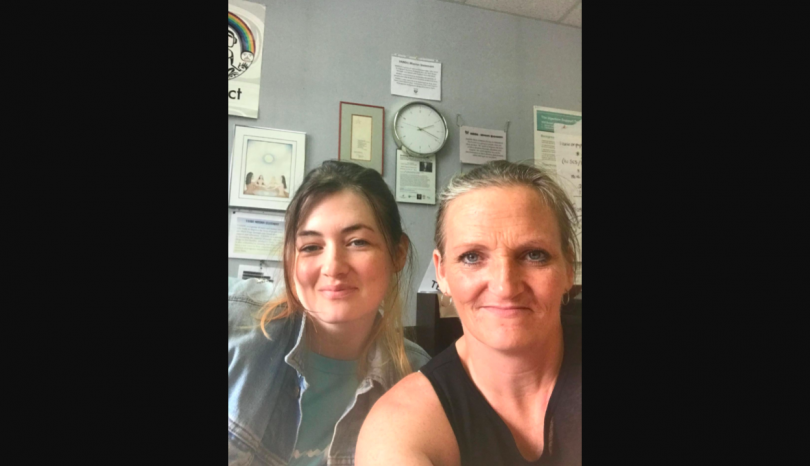Seeking help for opioid use can be confusing, frustrating, and, ultimately, defeating. Nobody knows that better than Laura Shaver and Reija Jean, who are Peer Advocacy Navigators with the BC Centre on Substance Use.
Shaver and Jean both have personal experience trying to navigate the health system and understand the challenges and barriers better than anyone. They also understand the stakes of ensuring people get the support and care they need amidst the ever-worsening and deadly drug poisoning crisis.
“I entered the system and I had to navigate my own way around with very little help,” says Shaver. “Eventually, I got involved in activism, and I met others who had gone through it and learned the hard way. We were so frustrated and afraid of these barriers – that the only way I could get some peace was to start connecting with others.”
Eliminating “endless rerouting” for substance-use care
Jean shared similar experiences. “I’ve been to transition housing, residential treatment, detox clinics, addictions counselling, and OAT (opioid agonist treatment) clinics,” she said. “I’ve bounced around these institutions for three years, and many others are cycled through various health, welfare, and corrections programs. The endless rerouting that many face while seeking substance use care is what we sometimes refer to as the ‘system.’”
They now use what they learned to advocate for accessible and equitable pathways to care.
Their roles as peer navigators is critical to ensuring people can access and stay connected to the supports they need. An individual seeking clinical support to improve their health and quality of life may face an overwhelming amount of stigma, lack of options, or a series of dead-ends when navigating the healthcare system.
Shaver and Jean help people bridge institutions that are otherwise disconnected and uncoordinated, breaking down barriers by providing individualized support, education, and guidance. They also provide guidance for people to navigate complex socio-economic systems including the criminal justice or welfare system that may be intertwined in the lives of many people who use drugs. Shaver and Jean assist numerous clients in accessing various substance use services and advocate for an additional 10-15 OAT patients each month. One day, they may be helping someone find a new prescriber or pharmacist, while another day they may be working with someone to attend medical appointments or access harm reduction services.
Both patient and advocate
Alongside providing guidance, support, and advocacy for others seeking support with substance use, both Shaver and Jean are patients themselves juggling their own wellbeing, health, and needs while continuing to help others. Thankfully, this model is flexible to allow Shaver and Jean to give back to a community that needs their help, while advocating for themselves. The information gleaned from their experiences is the clinical education component that has, until now, been missing.
Jean described how individuals seeking support for substance use have often had to rely on their own informal networks of care. “It can often feel like your community supports you better than your clinic. In a lot of ways, your community knows you. They share tricks of the trade with you that aren’t necessarily common knowledge”.
Their work extends beyond matching patients with the best fit for their healthcare needs. Shaver and Jean help patients and prescribers work together to build positive relationships with care providers, facilitate clear communication, and build self-advocacy skills.
People with lived and living experience have been informally guiding each other through the “system” for a long time. The role was first developed by the BC Association of People on Opiate Maintenance (BCAPOM) after they learned it could take up to 120 days before a patient complaint was processed. As a result, advocacy and education are goals of the peer navigator role.
Two-way bridge to better care
Shaver describes this work as bridging two worlds.
“We might be helping our peers navigate this clinical world, but we’re also helping care providers learn about our world and our language. It’s like we’re building a two-way bridge,” explained Shaver. “We shouldn’t only be learning to navigate their way of doing things, they also have to learn to navigate our world and build better systems with us.”
“There is a huge power differential that’s very real in our health care system,” says Amanda Giesler, the Clinical and Internal Engagement Lead at the BCCSU. She says that by having first-hand experience and expertise on clinical guidelines, peer navigators act as advocates and translators for all parties involved. This work serves to untangle the power dynamic between the patient-healthcare provider. “Their perspective and work is so critical to patient-centered care in a way that I don’t think any other profession could fill this role.”
Those perspectives are also brought to planning tables, as Shaver and Jean identify gaps and work collaboratively with the BCCSU to plan, develop, and implement practice guidance and initiatives designed for improving patient care – recognizing that including the voices of people with lived and living experience in health guidelines is imperative to improving and saving the quality of lives of individuals using substances.
Ultimately, the goal is to address the stigma associated with substance use to make the full continuum of support accessible for anyone seeking help.
“Imagine if it was socially acceptable to discuss your substance use like it was no big deal, Roberts says. “We have to address the stigma attached to substance use. Stigma is what leads to the deaths of many people with substance use disorders.”
This story was originally published by the BC Centre on Substance Use housed in St. Paul’s Hospital.





